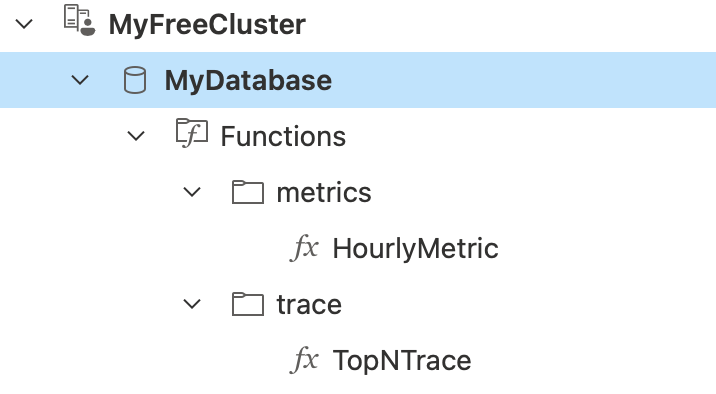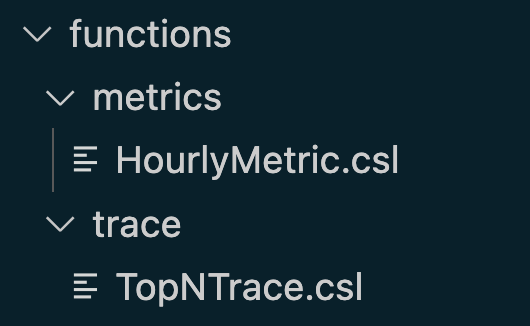Kusto Synced (ksd) is a tool that simplifies and accelerates development for Kusto.
ksd enables you to:
- Store commonly used Kusto functions and tables in source control. Deploy the changes using a single command locally or on CI:
ksd sync - Share reusable functions across teams. Functions are organized in the cluster database using the filesystem directory structure, with first-class support for adding function documentation.
- Author source controlled functions with ease. Write functions and test them in Azure Data Explorer (or any of your favorite editors). Once you're happy, simply store it in a file.
ksdautomatically handles syncing these declarations to your Kusto database. (Learn more about this by runningksd sync --help)
Write your function in your favorite Kusto editor, such as Azure Data Explorer that provides intellisense, syntax validation, and allows testing against real data.
// Returns service requests given a time window
let ServiceRequests = (start:datetime, end:datetime) {
Requests
| where TIMESTAMP between(start..end)
| extend Method = tostring(customDimensions['http.method'])
| extend Url = tostring(customDimensions['http.url'])
| extend StatusCode = tostring(customDimensions['http.statusCode'])
| project TIMESTAMP, Url, Method, StatusCode, DurationMs
}To test your function, simply invoke the function:
// Returns service requests given a time window
let ServiceRequests = (start:datetime, end:datetime) {
Requests
| where TIMESTAMP between(start..end)
| extend Method = tostring(customDimensions['http.method'])
| extend Url = tostring(customDimensions['http.url'])
| extend StatusCode = tostring(customDimensions['http.statusCode'])
| project TIMESTAMP, Url, Method, StatusCode, DurationMs
}
ServiceRequests(ago(1d), now())Once you're happy, follow the next step.
You may choose to organize related functions in folders that make sense for you. A general recommendation is to store functions under a functions folder, and table definitions under a tables folder. This can be simply under your repository folder, under src, or any folder of your choosing.
For this example, let's assume that you have the following setup, and saved your file as ServiceRequest.csl in functions.
- <REPO>
- functions
- ServiceRequest.csl
- tables
- RequestTable.csl
If you have permissions to manage the target Kusto cluster and database, simply run ksd sync in your functions or tables folder.
ksd sync functions --endpoint https://<my cluster>.kusto.windows.net/<my database>Otherwise, add the following task to your CI pipeline (assuming linux):
GitHub Actions:
- run: |
wget https://github.com/weikanglim/kusto-synced/releases/latest/download/ksd_linux_x86_64.tar.gz
tar -xzf ksd_linux_x86_64.tar.gz
./ksd sync tables
./ksd sync functionsAzure DevOps:
- bash: |
wget https://github.com/weikanglim/kusto-synced/releases/latest/download/ksd_linux_x86_64.tar.gz
tar -xzf ksd_linux_x86_64.tar.gz
./ksd sync tables
./ksd sync functionsYou should now be able to refresh your connection to the Azure Data Explorer, and see any new functions added:
Notice how the functions in the database is organized exactly how they are stored in source.
Also, notice that each function contains a docstring declaration that matches the comments you saved about your function.
It's that easy to write source-controlled functions and tables.
- Saving Kusto functions this way helps promotes sharing and creates reusable building blocks for you and your team (think documented libraries).
- If your or your team uses a gated checkin process, you can also enforce higher quality, consistent, and well-maintained function.
- Finally, when stored in source control, you are also able to retain revision tracking, search/refactor existing declarations when changed are made to your telemetry pipeline.


